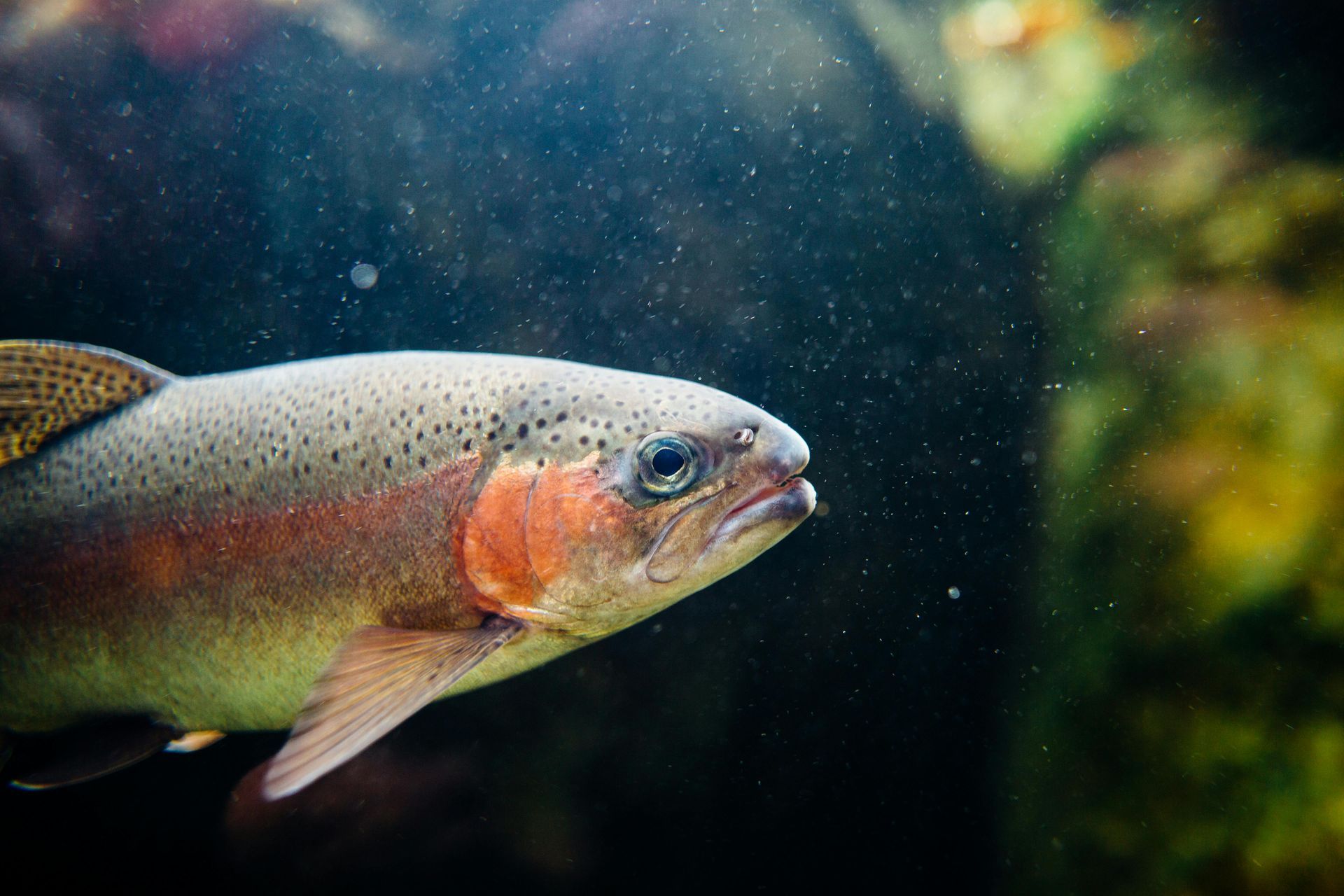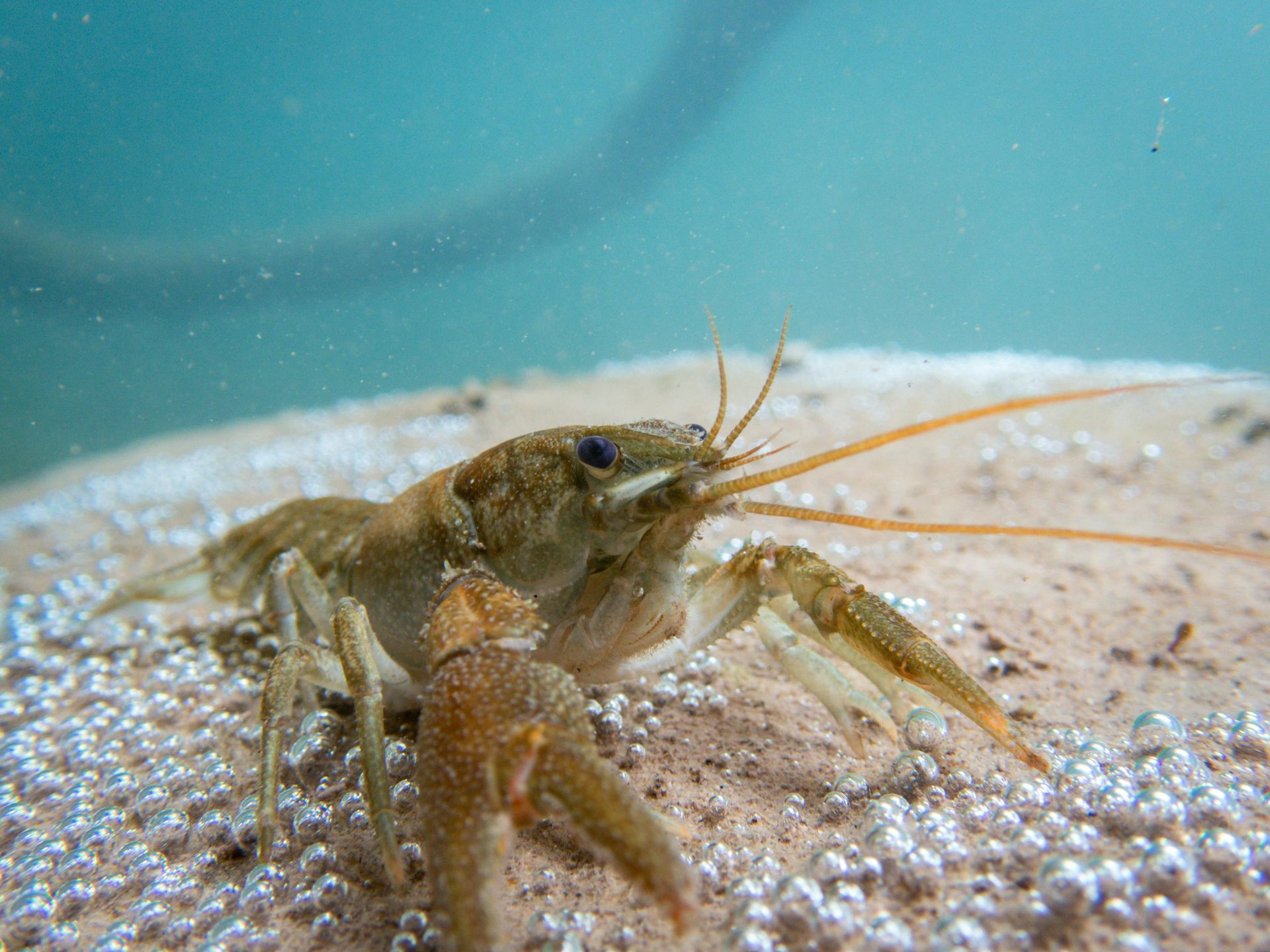Professional Pond Stocking Vermont
Vermont Limnology
The Importance of Stocking a Pond and Creating a Balanced Ecosystem
As a well-respected pond maintenance and pond construction company based in Vermont, we understand that creating a healthy pond presents both a unique opportunity and responsibility. Your pond isn't just a body of water; it’s a living, breathing ecosystem that, when properly managed, can become a sanctuary for you, wildlife and a centerpiece of natural beauty on your property.
Lake control of your ponds diversity today!
We will get back to you as soon as possible.
Please try again later.
Know your preferred species and their needs to support your Vermont fish
One of the most critical aspects of maintaining a healthy pond is stocking it with a variety of fish species and other aquatic organisms creating a healthy food chain. This is not merely for aesthetic pleasure or exciting fishing opportunities but is crucial for the sustainability of the pond itself. Here’s why it’s essential and how the right mix of species—including rainbow and brown trout, bass, bluegill, crayfish, along with other bottom feeders—can ensure your pond truly thrives. Effective management strategies are necessary to prevent overpopulation, which can lead to the loss of large fish due to stunted growth from insufficient food supply.
Stocking Ponds with Vermont Fish and Establishing a Balanced Food Chain
In nature, every living organism plays a specific role in maintaining ecological balance. When you stock your pond with different species to build a diverse population of fish and aquatic organisms, you’re mimicking the natural food web, which is essential for long-term health.
Top Predators
(Trout and Bass)
Stocking your pond with species like rainbow trout, brown trout, and largemouth bass provides the necessary top predators in your pond's food chain. These fish help regulate the populations of smaller fish and aquatic insects, ensuring that no single species overpopulates and throws the ecosystem out of balance.
Middle-Tier Species
(Bluegill)
Bluegill, sunfish, and other smaller species occupy the middle of the food chain. They are prolific breeders, providing an abundant food source for your larger predator fish, while also consuming algae, insects, and zooplankton. This helps control nuisance populations that can lead to excessive algae blooms and poor water quality.
Bottom Feeders
(Crayfish, Catfish)
Crayfish and other bottom feeders play a crucial role in cleaning up organic matter that settles at the pond's bottom, preventing the buildup of decaying material that could lead to oxygen depletion and harmful bacterial growth. These organisms also serve as a food source for larger fish, completing the food web.
By stocking Native Vermont fish from different levels of the food chain, you help maintain the ecological balance that keeps your pond's water quality high, its ecosystem healthy, and its beauty enduring.
Improved Water Quality
A well-stocked pond has better water quality, which is crucial for the long-term sustainability of your pond. When fish populations are balanced, they help regulate algae, aquatic plants, and insect populations that could otherwise overrun the pond and surrounding ecosystem.
Trout and Bluegill Help Control Algae and Aquatic Insects
Trout and bluegill consume aquatic insects like mosquitoes, midges, and other pests that might otherwise proliferate and cause issues, both for the pond and for the surrounding property.
Bottom Feeders Clean the Pond Bed
Crayfish, snails, and certain types of catfish act as nature’s cleaners. They feed on dead plant matter, algae, and detritus at the bottom of the pond, preventing the accumulation of organic waste. This keeps the water clear and helps reduce the risk of harmful bacteria and low oxygen conditions that can cause fish die-off
Plants Benefit from a Balanced Ecosystem
By maintaining a diverse aquatic community, you ensure that plant life—both submerged and floating—is naturally regulated. Overgrown aquatic plants can choke the pond and deplete oxygen levels, but when fish feed on these plants and their associated pests, it helps keep the aquatic vegetation in check.
Oxygenation and Aeration
The health of your pond's fish population is directly tied to oxygen levels in the water. Fish like trout, particularly in the cooler waters of the Vermont mountains, need well-oxygenated water to thrive. A well-balanced ecosystem with a variety of fish species helps with natural aeration
Fish Movement Contributes to Oxygen Circulation
The movement of fish through the water helps keep it circulating, preventing stagnant water and promoting oxygen exchange between the surface and deeper waters. Species like bass and bluegill are particularly active and help keep water moving.
Healthy Algae Growth Produces Oxygen
In moderation, algae provide a natural source of oxygen during photosynthesis. By stocking fish that feed on algae and keep its growth in check, you avoid the risk of harmful algal blooms that can deplete oxygen levels, especially at night when algae consume oxygen rather than produce it.
Oxygen Consumption by Fish and Bacteria
By creating a balanced fish population, you avoid overpopulation, which can lead to excessive oxygen consumption. An overcrowded pond will deplete its oxygen reserves quickly, leading to fish kills, especially during warmer months.
Establish
Natural Pest Control
A diverse fish population acts as a natural method of pest control. Fish feed on a variety of insects, larvae, and other organisms that could otherwise become problematic.
Bluegill and Bass Feed on Mosquito Larvae: Mosquitoes breed in stagnant water, but fish like bluegill and bass actively consume mosquito larvae, reducing the chances of a mosquito infestation around your pond. This not only makes your pond more enjoyable for you and your family but also helps reduce the spread of mosquito-borne illnesses.
Trout and Crayfish Reduce Nuisance Insect Populations: Both trout and crayfish feed on aquatic insects, which can prevent them from becoming overly abundant. A diverse pond ecosystem naturally limits the guesswork of insect control that could otherwise affect the enjoyment and health of your pond.
Recreational and Aesthetic Value
While the ecological benefits of a well-stocked pond are undeniable, stocking your pond with a variety of fish also adds recreational and aesthetic value. If you enjoy fishing, a pond filled with trout, bass, and bluegill offers a fantastic fishing experience right in your backyard. The thrill of catching trophy trout adds an extra layer of excitement, making each fishing trip memorable.
Fishing for Different Species: Each fish species offers a unique fishing experience. Rainbow and brown trout are prized for their fight and beauty, while bass provide a challenge for anglers due to their strength and size. Bluegill offer fun, easy catches, particularly for children or novice anglers.
Enhancing the Natural Beauty of Your Property: A well-maintained pond filled with diverse fish species is a dynamic and visually appealing feature. The presence of fish swimming in clear water enhances the natural beauty of the pond, while the addition of other aquatic life, like frogs, crayfish, and waterfowl, contributes to the vibrant biodiversity that your pond can attract.
Manage Complete Biodiversity
By stocking your pond with a variety of fish species and aquatic organisms, you’re contributing to the broader biodiversity of your local environment. A healthy pond ecosystem supports not only the fish and aquatic life within it but also attracts other wildlife such as birds, amphibians, and beneficial insects like dragonflies.
Crayfish and Other Bottom Dwellers Attract Wildlife: Crayfish and small fish serve as a food source for wading birds and other predators to survive. The presence of a variety of aquatic species can transform your pond into a hub of wildlife activity, enriching the biodiversity of the surrounding area.
Supporting Native Vermont Species: Stocking fish like brown trout and other native species supports local biodiversity and helps maintain genetic diversity within fish populations. This is important for the long-term health of both your pond and the larger aquatic systems in your region.
Creating a Thriving Vermont Pond Ecosystem
Stocking your pond with a diverse range of fish species and aquatic organisms is essential for creating a thriving, balanced ecosystem. By establishing a food chain that includes top predators, middle-tier species, and bottom feeders, you’ll ensure that your pond maintains high water quality, supports abundant wildlife, and provides recreational opportunities of an anglers dream for years to come.
At our Vermont-based pond maintenance business, we have the expertise to guide you through the entire process—from pond design to the careful selection of species that will best suit your unique environment. Together, we can create a pond that is not only a beautiful addition to your property but also a self-sustaining ecosystem that enhances the natural beauty of Vermont’s landscape.
Pre-Stocking Considerations
Assessing Pond Environment and Water Quality
Before introducing fish to your pond, it’s crucial to evaluate the pond environment and water quality to ensure a thriving ecosystem. Start by testing the water for pH levels, alkalinity, and nutrient content. These parameters are vital for the survival and growth of fish populations. Additionally, consider the water temperature, depth, and vegetation, as these factors significantly impact which fish species can thrive in your pond. For instance, rainbow trout prefer cooler, well-oxygenated water, while largemouth bass thrive in warmer waters with plenty of cover. By understanding these environmental factors, you can create a suitable habitat that supports a diverse and healthy fish population.
Understanding Legal and Environmental Regulations
In Vermont, there are specific regulations and guidelines for stocking private ponds with fish. It’s essential to familiarize yourself with these rules to ensure that you are not introducing non-native species that could harm the local ecosystem. The Vermont Fish & Wildlife Department provides comprehensive guidelines for private pond management and stocking options. Adhering to these regulations not only protects native Vermont fish but also ensures that your pond contributes positively to the local environment. By following these guidelines, you can create a sustainable and legally compliant pond ecosystem.
Stocking and Managing Fish Populations
Creating a thriving pond ecosystem requires careful and sustainable management of fish populations. This involves stocking the right species, in the right quantities, and at the right time. For example, spring is typically the best time to stock fish in Vermont ponds, as the water temperature is suitable for most species.
Strategies for Sustainable Fish Population Management
When selecting species, consider those that are well-suited to your pond’s environment. Largemouth bass, for instance, prefer warm water and plenty of cover, while rainbow trout thrive in cooler, well-oxygenated environments. Including a mix of species, such as largemouth bass, rainbow trout, and fathead minnows, helps establish a balanced food chain. This diversity ensures that your pond supports a healthy food chain, where each species plays a role in maintaining ecological balance.
Regularly monitoring fish populations is also crucial. This helps you identify any imbalances, such as overpopulation or underpopulation, and adjust your management strategies accordingly. By following these sustainable practices, you can create a vibrant Vermont pond ecosystem that offers exciting fishing opportunities and supports a healthy food chain for years to come.
Creating a Thriving Vermont Pond Ecosystem
Stocking your pond with a diverse range of fish species and aquatic organisms is essential for creating a thriving, balanced ecosystem. Additionally, fishing opportunities in a stocked stream can be particularly exciting, as fish stocking schedules allow anglers to target specific fish species in these streams. By establishing a food chain that includes top predators, middle-tier species, and bottom feeders, you’ll ensure that your pond maintains high water quality, supports abundant wildlife, and provides recreational opportunities of an anglers dream for years to come.
At Vermont Limnology, our Vermont-based pond maintenance company, we have the expertise to guide you through the entire process—from pond design to the careful selection of species that will best suit your unique environment. Together, we can create a pond that is not only a beautiful addition to your mountain property but also a self-sustaining ecosystem that enhances the natural beauty of Vermont’s landscape.
Interested in our services? We’re here to help!
We want to know your needs exactly so that we can provide the perfect solution. Let us know what you envision and we’ll do our best to make your dreams a reality.
If you're ready to embark on a journey of aquatic discovery, we invite you to partner with us at Vermont Limnology. Together, let's create ponds that inspire, rejuvenate, and sustain life for generations to come.



